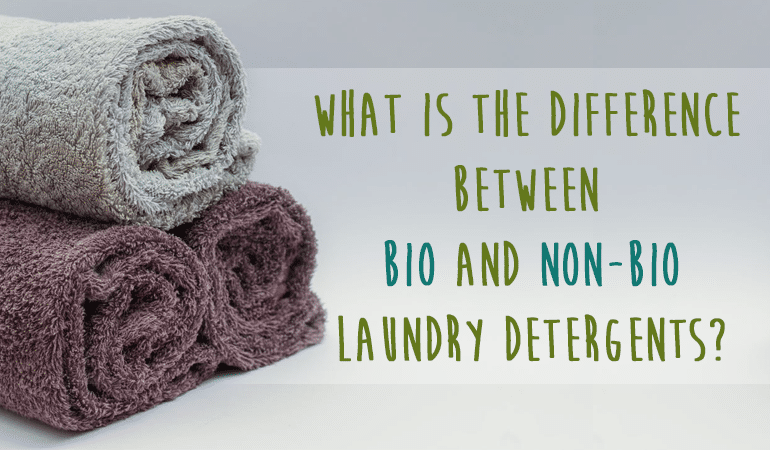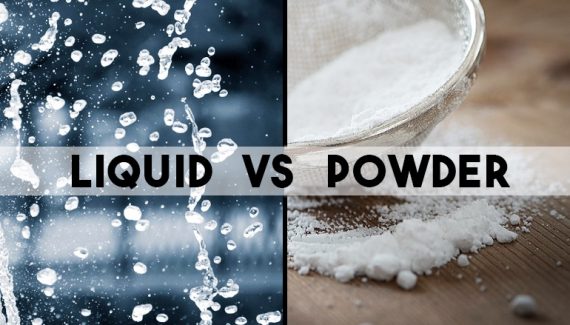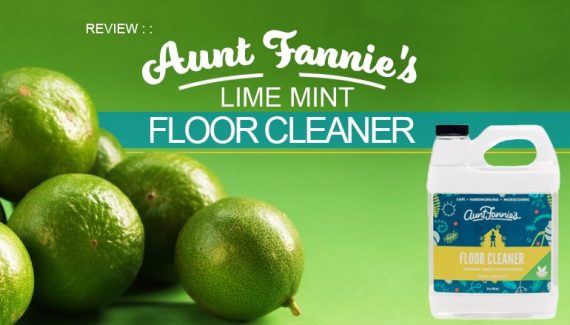Safe Household Cleaning is reader-supported. All reviews are independent and any products reviewed are purchased by the site owner. To help fund this model, some of the links on the site are affiliate links. If you decide to make a purchase from one of these links, this site will receive some commission. At no cost to you. It helps keeps this place running. Learn more
There are many choices when buying laundry detergent, from the formulation (capsule, powder, liquid) to bio or non-bio. It can be difficult to find reliable evidence for which detergents are most effective at removing stains, or the best for those with existing detergent-related skin conditions, such as irritant or allergic dermatitis. In the following article, we try to simplify the choices, to make buying laundry detergent slightly easier.
Note: The separation between bio and non-bio detergents is most pronounced in the United Kingdom. In the rest of Europe and the United States, most detergents are considered ‘biological’, containing enzymes.
What does non-bio detergent contain?
The purpose of bio and non-bio detergents is to remove dirt, helping to clean clothes. To achieve this, both types of detergent contain many of the same ingredients, which can themselves be associated with irritant and allergic skin conditions. The ingredients found in non-bio detergents include [1]:
1. Surfactants (e.g. sodium lauryl ether sulfate, octyl thioglucoside)
o Lowers the surface tension of water, helping to loosen dirt and wet clothes
2. Builders (e.g. citric acid, EDTA)
o Softens water and helps to prevent the re-deposition of dirt
3. Bleachers (e.g. sodium percarbonate)
o Can help to remove colored stains
4. Brighteners (e.g. Tinopal, DMS)
o Artificially make laundry appear whiter and less yellow
5. Fragrances
o Masks the smell of the detergent and laundry
6. Preservatives (e.g. sodium benzoate, methylisothiazolinone)
o Prevents microbial growth, helping to improve detergent shelf-lives
The exact composition of non-bio detergents can vary depending on the purpose and manufacturer. Typically, those for infant clothes will use milder surfactants and omit fragrances. Detergent ingredient labels contain very little useful information, but understanding the different chemical categories can help to choose detergents less likely to be irritating to the skin.
What does bio detergent contain?
Biological (bio) detergents can contain all the ingredients found in non-bio, listed above. In addition, they also contain enzymes to help break down specific chemicals that can be more difficult to remove with conventional (non-bio) detergents. Bio detergents can contain a mixture of enzymes – although the specifics are rarely listed on the ingredient label – these include [2]:
1. Protease – to break down proteins
2. Lipase – to break down fats
3. Amylase – to break down starches
4. Pectate lyase – to break down fruit pectin stains
Which detergent is more effective?
The main benefit of bio detergents is that they are effective at 20 to 50oC, much lower than non-bio, which are normally recommended at temperatures above 50oC. The lower temperature is associated with an energy saving, thought to be better for the environment and household bills [3].
One of the main problems with the bio or non-bio choice is that there’s very strong evidence that neither group consistently outperforms the other in cleaning ability – when used properly (e.g. using a bio detergent at 60oC isn’t going to work as well as at lower temperatures) [4]. Bio and non-bio detergents are not differentiated by cleaning ability.
[Note: While bio detergents can be used at lower temperatures, there is an environmental impact from the transportation and disposal of the additional ingredients]
Is bio or non-bio better for skin?
Both bio and non-bio detergents contain essentially the same ingredients, summarized above, all of which can be associated with irritant and allergic skin conditions. The only unique ingredient between the two products is the enzymes in bio detergents, and there is debate if these are associated with skin conditions.
There is concern that the enzymes in bio detergents may cause irritation when residues on clothes from laundering become wet. This would appear to be an obvious source of irritation, especially given that modern washing machines use less water for environmental reasons. However, randomized clinical trials over the past 50 years have not found a link between an increase in irritant or allergic skin conditions to bio detergents, over non-bio [5].
The NHS no longer recommends parents solely use non-bio detergents on baby clothes, due to a lack of evidence there is any benefit.
Summary
Laundry detergents are associated with irritant and allergic skin conditions, but there does not appear to be a difference between bio and non-bio. Bio detergents can be used at lower temperatures, but there is no significant difference in cleaning ability between the two products.
Both bio and non-bio detergents contain many of the same ingredients – surfactants, builders, bleachers – known to cause skin conditions. If a detergent reacts poorly with your skin, it may be beneficial to look for a milder alternative. Alternatives may be bio or non-bio, as the non-enzyme ingredients (e.g. surfactants) likely have a more significant irritant effect.
References
1. Rowe, H. D. (2006). Detergents, clothing and the consumer with sensitive skin. International journal of consumer studies, 30(4), 369-377.
2. Smulders, E., Von Rybinski, W., Sung, E., Rähse, W., Steber, J., Wiebel, F., & Nordskog, A. (2007). Laundry detergents. Wiley‐VCH Verlag GmbH & Co. KGaA.
3. Banik, R. M., & Prakash, M. (2004). Laundry detergent compatibility of the alkaline protease from Bacillus cereus. Microbiological Research, 159(2), 135-140.
4. Patrick Gallagher; Which. (2017). Bio vs non-bio washing powder. [Accessed: 16/12/17] www.which.co.uk
5. Basketter, D. A., English, J. S. C., Wakelin, S. H., & White, I. R. (2008). Enzymes, detergents and skin: facts and fantasies. British Journal of Dermatology, 158(6), 1177-1181.



2 Comments
Very Good Post. Please continue with this excellent blog
Thanks Antonio – I’ve literally just started but intend on continuing for a while yet!